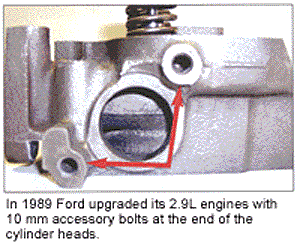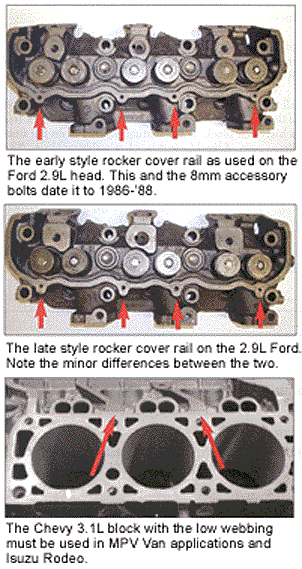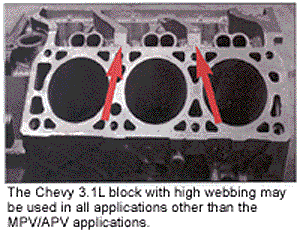This month we are going to look at some issues that have certainly been identified in previous issues of Engine Builder. However, based upon the number of recent inquiries at PERA headquarters we thought it might be a good time to bring them to everyone’s attention again as a helpful reminder.
First, is the 2.9L Ford OHV V6 engine. In 1986 through 1988 the 2.9L cylinder head, p/n E6TZ-6049-A, had 8mm accessory bolts on the end of the cylinder head and the rocker cover gasket rail was slightly wider. Then in 1989 the cylinder head p/n FOTZ-6049-E had upgrades to 10mm accessory bolts and the rocker cover gasket rail was narrower with some very minor difference in configuration.
This head, according to Ford, also required new rocker covers – p/n’s E9TZ-6582-F AND E9TZ-6582-H.
Both 8mm and 10mm cylinder heads carry the 86TM casting number, so you will want to pay attention to the accessory bolt sizes. 
Although, Ford no longer provides the 8mm head they indicate that the 10mm head is the service replacement, and of course recommend the use of the new rocker covers. Additionally, there are a number of aftermarket suppliers that provide brand new 2.9L Ford head castings, which according to our research are all 10mm style heads.
Another inquiry of late has been 3.1L Chevrolet OHV V6 engine blocks and the difference of the lifter valley area webbing height. The block that seems to continue to be in question is casting number 10110519 used in the 1991 through 1993 model year. 
This block casting came in two versions – one with the high webbing, with aluminum cylinder heads, used in the GM front wheel drive vehicle platforms A, J, L and W; and two, the same casting number was used in the MPV FWD van with cast iron cylinder heads. The problem in the MPV van was engine compartment clearance that required the manifold to sit lower on the engine. Hence, the low webbing in the lifter valley of the block for the lower mounting intake manifold is born.
Oh, and there is a wild card in the mix, the Isuzu pickup (’91-’94) and Rodeo (’91-’92) use the MPV cast iron head engine so you will find the low webbing in a RWD/4WD as well.
Now here is a nugget that we have found to be true in all the core engines that we have looked at to this point: if the casting number is on the left side of the block it is a high web block. If the casting number is on the front upper area of the block it is a low webbing block. Now who said you can’t teach old tricks to a new dog?
The Production Engine Remanufacturers Association (PERA) offers SourcePERA Software, a revolutionary electronic information system that identifies engines and their components by make, model and year-specific applications based upon AAIA standard lookup tables. 
Casting numbers, specific notes and photos provide for an absolute definitive identification. For more information about PERA or SourcePERA call 847-439-0491; or visit www.pera.org.













